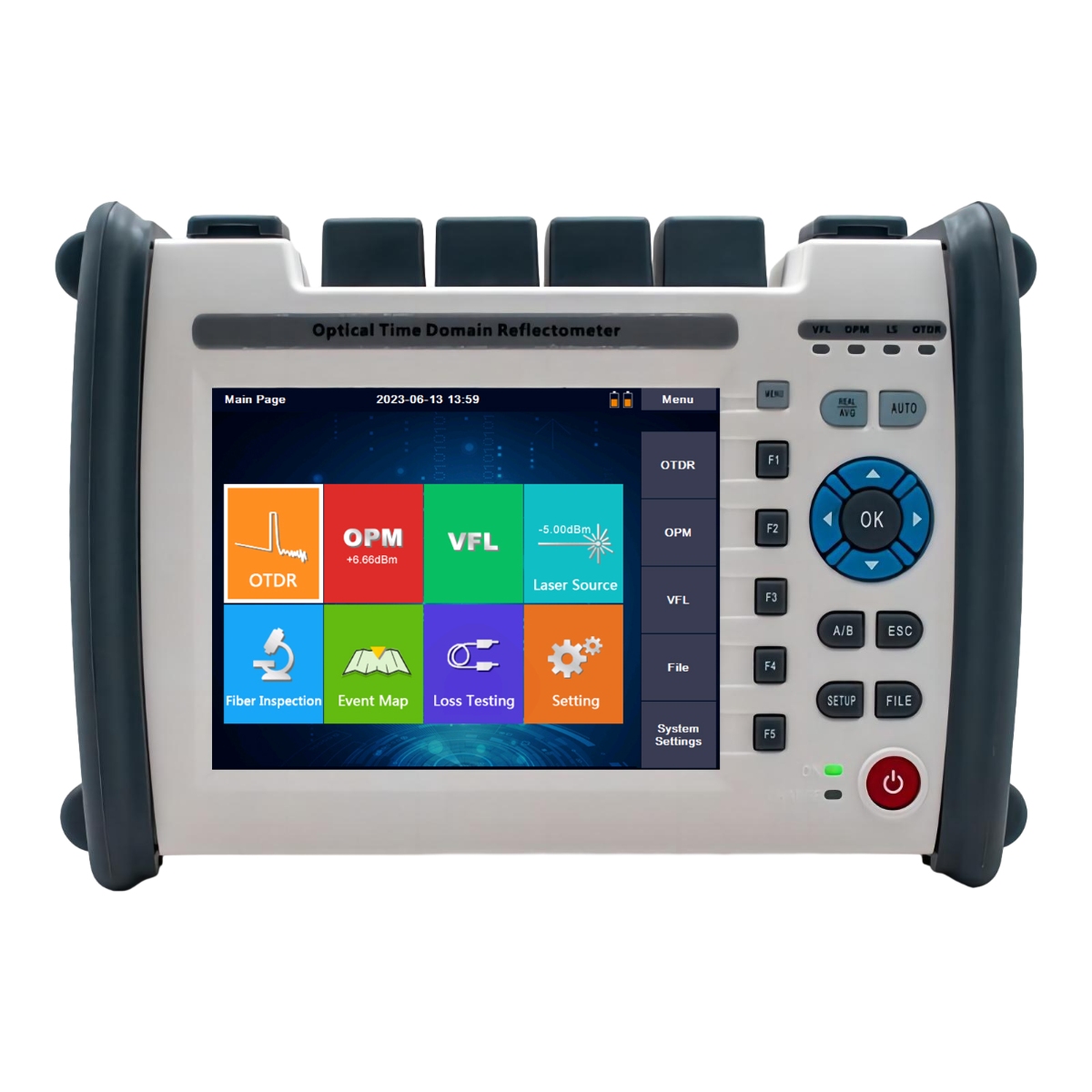The Optical Time Domain Reflectometer (OTDR) is a powerful instrument widely used in the field of fiber optics for characterizing and testing optical fibers. OTDRs provide valuable insights into the physical properties of fiber, such as attenuation, splice loss, and fiber length. In this article, we will delve into the operating principles of OTDR and gain a better understanding of how this instrument works.
Operating Principles of OTDR:
1. Pulses of Light Generation:
The OTDR operates by emitting short pulses of light into a fiber under test. These pulses are typically generated using a laser diode or an LED. The pulses are sent into the fiber at one end, and their characteristics, such as wavelength and power, can be adjusted depending on the specific testing requirements.
2. Light Propagation and Backscattering:
As the optical pulses propagate through the fiber, they encounter various conditions such as fiber bends, connectors, splices, and breaks. These conditions cause a portion of the light to be scattered back towards the OTDR. The backscattered light consists of Rayleigh scattering and Fresnel reflection, which carry valuable information about the optical fiber.
3. Time Domain Analysis:
The OTDR analyzes the backscattered light by measuring the time it takes for the light to travel back to the instrument. By capturing the reflected light over time, the OTDR creates a time-domain trace that represents the characteristics of the fiber being tested. The trace provides information about events such as fiber attenuation, reflections, splices, and breaks.
4. Light Detection and Data Processing:
The OTDR employs a photodetector to capture the backscattered light. The photodetector converts the light into electrical signals, which are then processed by the instrument's electronics. The OTDR uses sophisticated algorithms to analyze the collected data and calculate the relevant parameters such as attenuation, loss, and distance.
5. Display and Analysis:
The processed data is presented on the OTDR's display as a graphical representation known as a trace. The trace shows the detected signals as a function of distance along the fiber under test. By interpreting the trace, technicians can identify the location and magnitude of fiber events such as splices, connectors, and breaks. The OTDR also provides tools for in-depth analysis, allowing technicians to precisely measure and characterize the fiber's performance.
Conclusion:
The Optical Time Domain Reflectometer (OTDR) enables comprehensive characterization and testing of optical fibers. By emitting light pulses into the fiber and analyzing the backscattered light, the OTDR provides valuable information about fiber attenuation, losses, and events. Through time domain analysis, light detection, data processing, and graphical representation, the OTDR assists technicians in accurately assessing the condition and performance of optical fibers. The utilization of OTDRs is crucial in ensuring the reliability and efficiency of fiber optic networks and plays a vital role in the maintenance and troubleshooting of optical communications systems.

